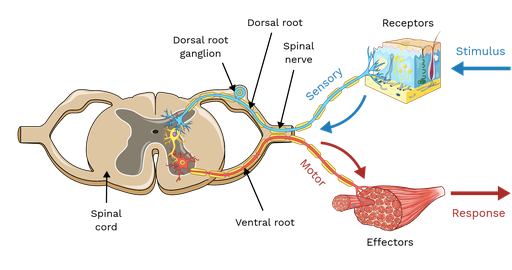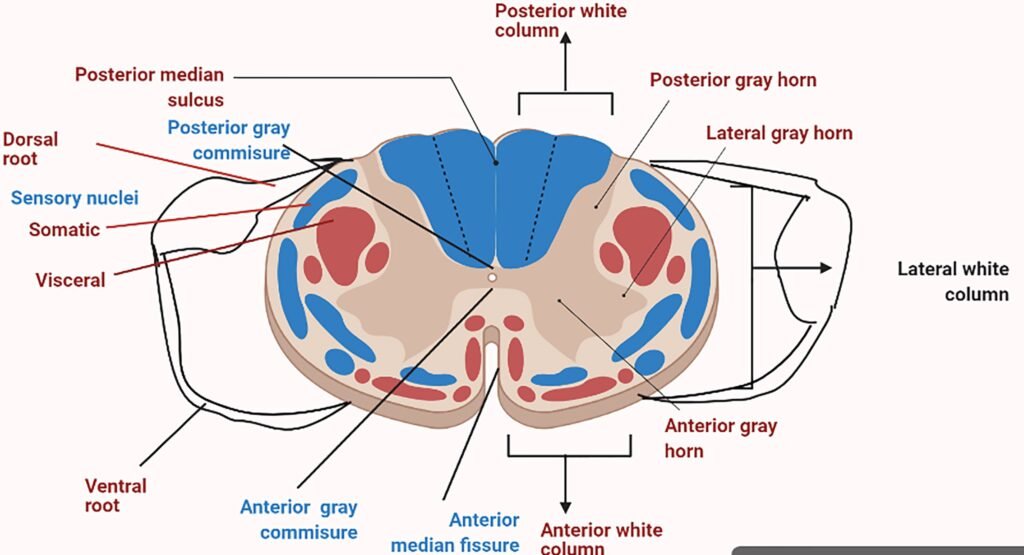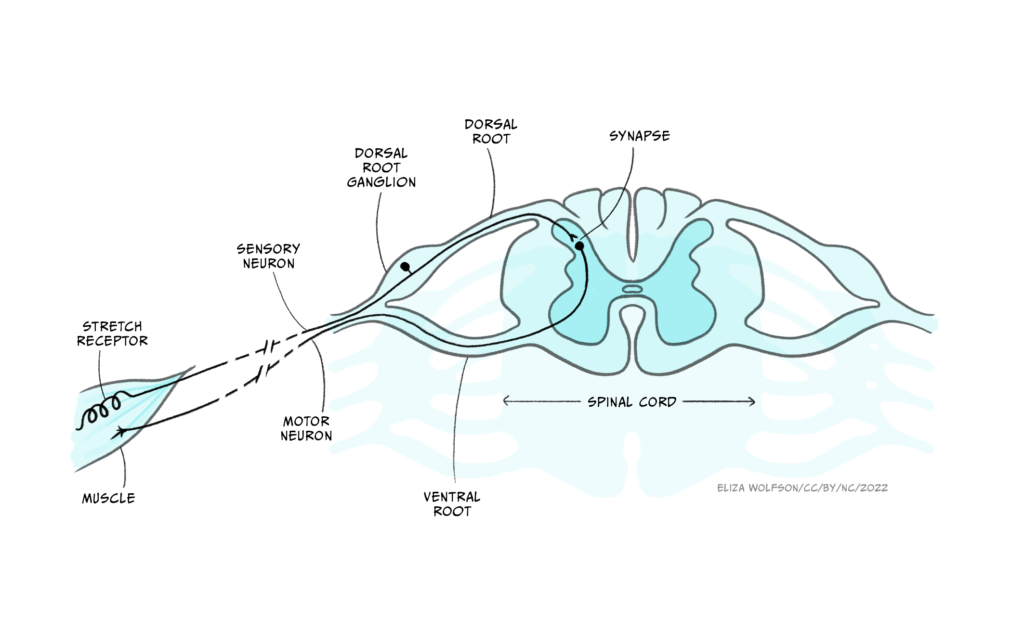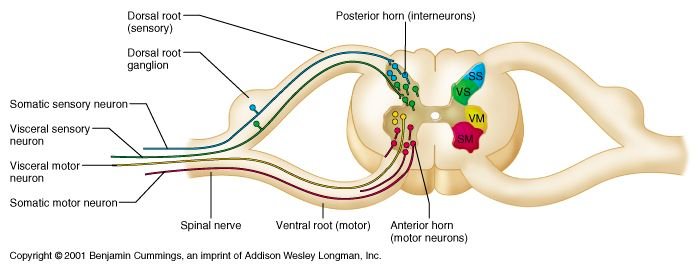what is Dorsal Root Ganglion(DRG)?
The Dorsal Root Ganglion (DRG) stands as a cluster of nerve cell bodies positioned outside the spinal cord within the vertebral canal. Its pivotal function involves transmitting sensory information from diverse body regions to the central nervous system. In essence, the DRG is integral to our ability to perceive and respond to external stimuli. Understanding its significance contributes to a deeper comprehension of neural processes within the human body. The intricate role of the DRG underscores its importance in our complex sensory system. The human body, a marvel of complexity, relies on the intricate orchestration of various functions by the nervous system. At the core of this intricate system is the DRG, a small yet indispensable structure that demands our attention and appreciation for its crucial role.

Structure of Dorsal Root Ganglion
Nestled within the spinal cord, the DRG serves as a pivotal hub housing a cluster of nerve cell bodies. These specialized neurons play a crucial role in relaying a diverse range of sensory signals from the body’s periphery to the central nervous system, facilitating our ability to perceive and respond to the external environment. Understanding the intricacies of this neural relay is fundamental to appreciating the seamless coordination that underlies our sensory experiences and overall nervous system function.
Functions of DRG
The DRG isn’t simply a passive messenger; it actively engages in processing sensory information and plays a contributory role in reflex actions. Unraveling its functions not only highlights the intricacies of the nervous system but also underscores the dynamic involvement of the DRG in shaping our responses to sensory stimuli.

Disorders Affecting Dorsal Root Ganglion
Regrettably, akin to any other body part, the DRG is vulnerable to disorders. Neuralgia and compression issues can disturb its regular functioning, giving rise to a spectrum of health issues.
Dorsal Root Ganglion and Pain Perception
Recent studies have revealed the pivotal role that the DRG plays in pain perception. It’s noteworthy that the origins of many chronic pain conditions often lie in the malfunctioning of the DRG. Exploring this connection holds the promise of providing valuable insights that could lead to the development of innovative pain management strategies, offering new avenues for effective relief.
Diagnostic Techniques for Dorsal Root Ganglion Issues
Identifying issues with the DRG demands advanced diagnostic techniques. From cutting-edge imaging technologies to comprehensive clinical assessments, healthcare professionals utilize a variety of tools to detect and comprehend problems associated with this vital neural structure.

Treatment Options for DRG Disorders
Tackling DRG disorders requires a comprehensive strategy. Medications play a role in alleviating symptoms, and in severe instances, surgical interventions become necessary for restoring normal function. This multi-faceted approach underscores the importance of tailoring treatments to the specific needs of individuals with DRG-related issues, ensuring a holistic and effective management plan.
Recent Advancements in Dorsal Root Ganglion Research
The field of neuroscience is dynamic, continuously exploring the DRG and revealing new possibilities. Ongoing research brings forth emerging therapies and potential breakthroughs that instill hope for individuals facing challenges with DRG-related disorders. This evolving landscape suggests promising avenues for advancements in understanding, diagnosis, and treatment, fostering optimism within the neuroscience community and among those affected by DRG issues.
Living with DRG Disorders
Navigating the complexities of DRG disorders is a journey that demands resilience and a reliable support system. Implementing effective strategies for managing daily life, combined with a strong support network, can significantly enhance the quality of life for individuals grappling with these challenges.
Preventive Measures for DRG Issues
Prevention is always preferable to cure. Making lifestyle adjustments and prioritizing regular check-ups can play a crucial role in maintaining the health of the DRG and the overall nervous system. These proactive measures contribute to long-term well-being, reducing the likelihood of issues with the DRG and promoting a healthier nervous system.
Expert Opinions on DRG Disorders
Insights from neurologists, coupled with the experiences of individuals managing DRG disorders, contribute to a comprehensive understanding of the challenges and potential solutions associated with these conditions.
The Future of DRG Research
As we look ahead, promising developments in DRG research point to a future. Where more effective treatments and preventive measures may be on the horizon. The exploration of uncharted territories in neuroscience holds the key to unraveling the full potential of the DRG.

Conclusion
In conclusion, the Dorsal Root Ganglion stands as a hidden linchpin in our nervous system. Deserving recognition for its pivotal role. Delving into its intricate structure and functions is not just an academic pursuit. It holds the key to advancing medical understanding, offering hope for improved treatments. And ultimately making a profound impact on the lives of individuals grappling with DRG-related challenges. Understanding this small yet mighty component underscores the ongoing quest for enhanced medical knowledge and patient well-being.
FAQs
- What is the primary function of the DRG?
- The Dorsal Root Ganglion primarily processes and transmits sensory information from the periphery of the body to the central nervous system.
- How can one prevent issues with the DRG?
- Lifestyle adjustments, such as maintaining a healthy posture and staying active, can contribute to preventing issues with the DRG. Regular check-ups are also essential.
- Are there non-surgical treatments available for DRG disorders?
- Yes, non-surgical treatments, including medications and physical therapy, are often used to manage Dorsal Root Ganglion disorders.
- What are the common symptoms of DRG disorders?
- Symptoms may include pain, tingling, and numbness in the areas served by the affected nerves, as well as potential motor function issues.
- Is DRG research making progress in finding new treatments?
- Yes, ongoing research into the Dorsal Root Ganglion is uncovering new possibilities. And potential breakthroughs, offering hope for improved treatments in the future.
